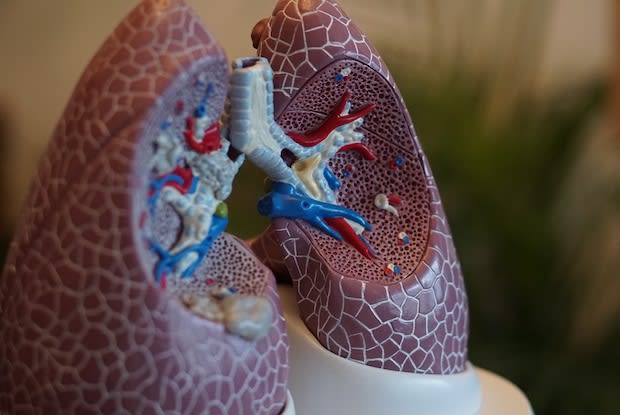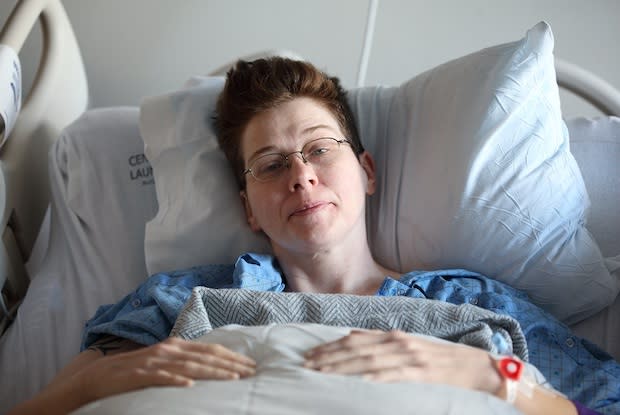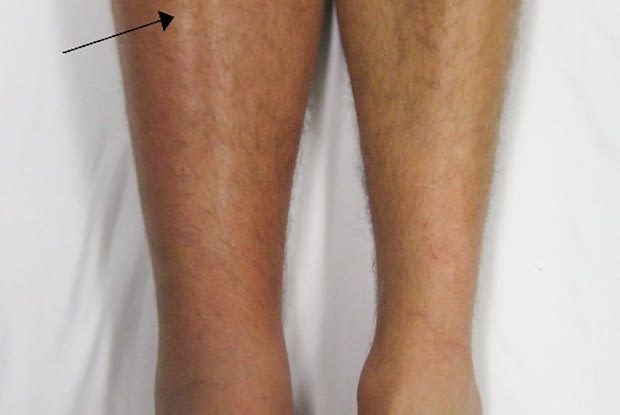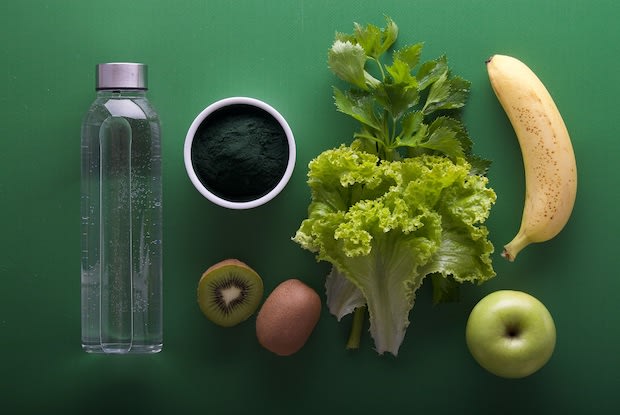Table of Contents
I. The Purpose of a Blood Clot
IV. What Increases Blood Clot Risk?
VII. Treatment for Blood Clots
The Purpose of a Blood Clot
When you hear the word blood clot, the mind often thinks of this as a negative event. The blood’s ability to clot is actually a good thing otherwise, the body would lose too much blood after an injury. A blood clot is how bleeding stops after a cut or scrape, something everyone has likely experienced in their lifetime.
But when a blood clot occurs in certain regions inside the body, it can cause damage to the tissues around it. Blood clots that form in the veins of the legs, arms, and groin may break free and move to other parts of the body. Blood clots in the lungs can be especially harmful. The Centers for Disease Control and Prevention estimate that blood clots affect 900,000 Americans each year. As many as 100,000 Americans die of blood clots annually. [1]
What is a Blood Clot?
A blood clot is a clump of blood that has pooled together into a solid state, and forms in a blood vessel such as an artery or vein. The proper term for blood clots is venous thromboembolism (VTE). The short video below by the British Heart Foundation provides a clear explanation of how blood clots are formed.
Types of Blood Clots
Deep vein thrombosis and pulmonary embolism are the two primary forms of blood clots. A blood clot may happen to anyone at any age, so it is vital to understand the risk factors for VTE. Blood clots are serious and can cause illness, disability, and in the worst cases, death. If caught early, blood clots may be treated, and future incidence can be prevented. [2]

Deep Vein Thrombosis (DVT)
DVT occurs when a blood clot forms in a deep vein, typically in the lower leg, thigh, pelvis, or arm. It is a medical condition that may or may not present symptoms but should be taken seriously. There are other terms associated with DVT such as postphlebitic syndrome, post-thrombotic syndrome, or the more general term, venous thromboembolism (VTE). [3]
Get savings updates for Your Medications
Pulmonary Embolism (PE)
Complications with a DVT can result in PE. When a portion of a DVT breaks loose, it can travel through the bloodstream to the lungs and cause a blockage. This blockage in the lungs is what characterizes a PE.
If a blood clot in the lungs is small, recovery is possible with appropriate treatment, but there may still be damage to the lungs. However, if a blood clot is large, blood flow to the lungs may come to a halt and can be fatal. A PE can, in some cases, damage the right side of the heart. A blood clot in the lungs causes a restriction in blood flow and a decrease in oxygen levels, which can harm other organs, too. [4]
The Centers for Disease Control and Prevention estimate that 1 in 4 people who have a PE die without warning or sudden death. [1]

What Increases Blood Clot Risk?
Several factors can increase a person's risk of developing a blood clot. Genetic, environmental, and lifestyle factors all contribute to VTE risk, so it’s important to keep yourself informed.
Risk Factors for VTE:
Injury
Injury to a blood vessel wall, such as a vein, can be caused by a fracture, severe muscle injury, or major surgery (involving the hip, legs, abdomen, pelvis, or brain).
Slow blood flow

- Slow blood flow can be the result of a few different factors.
- Hospitalization or Surgery: Confinement to a bed due to a medical condition or surgery can increase blood clot risk. It is estimated that one-half of blood clots occur during or not long after a surgery or hospital stay.
- Limited movement: a cast on your leg or arm helps to heal the bone but can always restrict movement.
- Sitting: Sitting for extended periods, such as on an overseas flight or driving on a long road trip, can increase risk. Crossing legs is not recommended.
- Paralysis
Increase estrogen
- Birth control pills
- Hormone replacement therapy (often used after menopause)
- Pregnancy
Certain chronic illnesses
- Lung Disease
- Heart Disease
- Cancer and cancer treatment
- Crohn’s disease or ulcerative colitis
- Certain heart rhythm disorders
Genetic Factors
- Family history of DVT or PE
- Inherited clotting disorders: Factor V Leiden is a genetic condition characterized by a mutation of one of the clotting factors in the blood, and is a prevalent genetic risk factor for VTE [5]
Other factors
- Previous DVT or PE
- Age (as you age, risk increases)
- Obesity
- Smoking
- A catheter located in a central vein [2]
Symptoms of a Blood Clot
The symptoms of a blood clot may vary depending on its location and severity. Below is a list of different symptoms dependant on location.

In the arms, legs, or abdomen:
- Swelling
- Sudden pain
- Warmth on the spot
- Reddish discoloration
- Soreness
- Diarrhea
- Vomiting
- Severe abdominal pain
- Blood in the vomit or stool
In the brain:
- Changes in vision
- Speech impairment
- Seizures
- Weakness
- Changes in sensation in the face, or one side of the body
In the lung:
- Dizziness
- Rapid pulse
- Difficulty breathing
- Sharp pain in the chest
- Sweating
- Coughing blood
- Passing out
In the heart:
- Chest pains that extend down the left arm
- Nausea
- Dizziness
- Passing out
- Shortness of breath
- Excessive sweating [6]
Prevention
Stay Active
Staying active helps to keep your body moving and your blood pumping. Exercising the lower leg muscles with help to maintain blood flow in that area, reducing the risk of a DVT. When you are on a long flight, get up, and move around every hour. On long car trips, stop the car every so often to walk around outside and move your legs. Walking and stretching are great ways to move the body.

Eat Well
Heart disease is a risk factor for blood clots. Neal Barnard. M.D., suggests a plant-based diet to decrease or eliminate risks associated with heart disease. A vegan diet has been shown to reverse heart disease and diabetes, so it is worth being open to these kinds of lifestyle changes. Dr Barnard is the author of the book "The Vegan Starter Kit," which is a useful source for everything you need to know about plant-based eating. [7]

The Rich Roll Podcast has an informative interview available with Dr Barnard, where he discusses plant-based eating and its role in preventing heart disease and balancing hormones.
Don’t smoke
Smoking increases your risk of blood clots.
Know your family history
Clotting problems can be hereditary, such as Factor V Leiden or high levels of Lipoprotein(a). It’s important to inquire about your family history of certain blood clotting conditions. There are blood tests you can take that are not included in most standard cholesterol panels, so make sure to speak with your doctor and advocate for yourself.
Talk to your doctor/surgeon
Speak with your doctor about incorporating compression stockings into your travel routine to improve blood flow in the limbs. Your doctor is the best person to speak with when considering taking anticoagulant drugs in the prevention of blood clots. After surgery or an accident, you are most susceptible to blood clots. Have a conversation with your doctor and ask how they plan to reduce your risk of developing a blood clot. [8]
Treatment for Blood Clots
If you are concerned, you have a DVT or PE, seek emergency help immediately. Priorities for your doctor will be to clear the blood clot and to prevent future clots from happening. You may receive an injection of clot-dissolving medication and a prescription for an anticoagulant or a medication that promotes a thinning of the blood. Your doctor is the best person to speak with for the prevention and treatment of blood clots.
The content in this article is intended for informational purposes only. This website does not provide medical advice. In all circumstances, you should always seek the advice of your physician and/or other qualified health professionals(s) for drug, medical condition, or treatment advice. The content provided on this website is not a substitute for professional medical advice, diagnosis or treatment.
